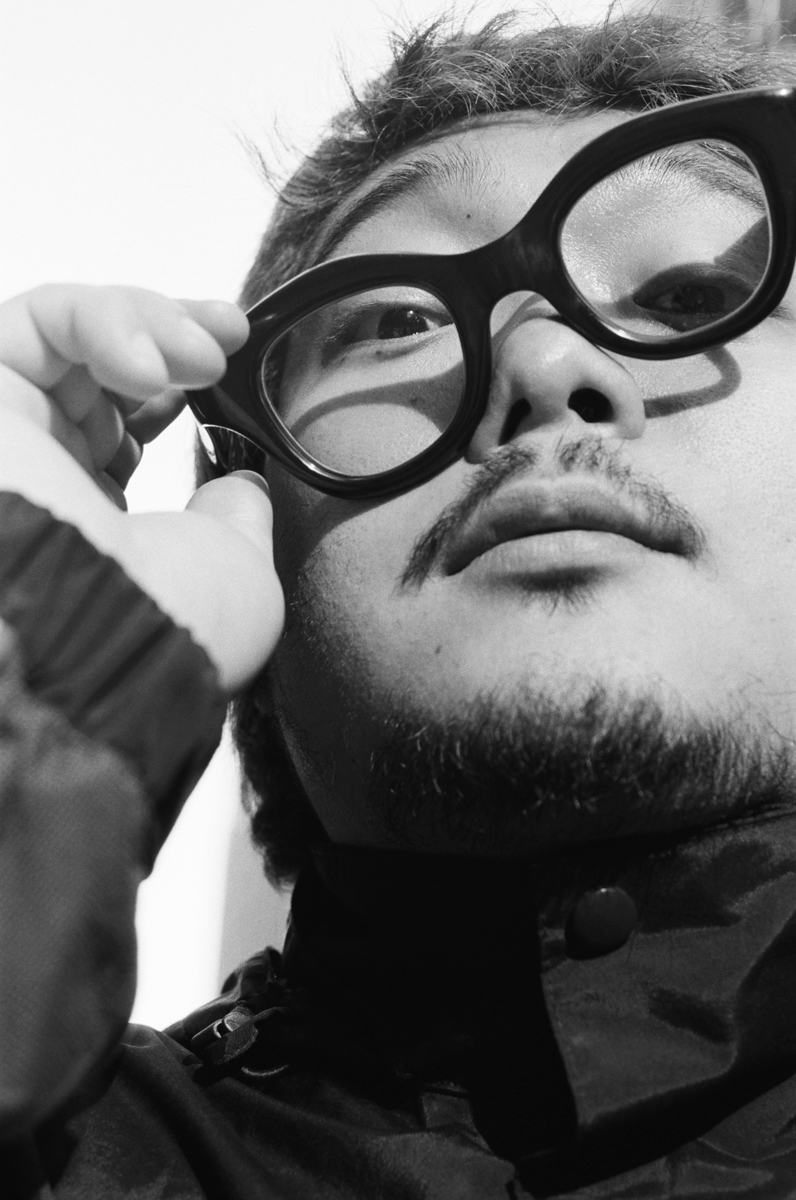Ask any designer how and when they were inspired to become a fashion designer, and they’re bound to mention a childhood epiphany or a particular moment. The New York-based Japanese designer Ryohei Kawanishi is no exception – but he doesn’t just mean being a fashion designer in the traditional sense. To him, it wasn’t always about fashion; he’s talking about the fundamentals, too, like art, composition, conceptuality, and the power of multidisciplinary collaborations. “I was always more interested in conceptual art and approached everything with arty thinking – I like making complicated points simple,” he says of what he originally pined after. “I knew I enjoyed art-making and creative exploration, and there weren’t many choices for art schools in Japan. I applied to Central Saint Martins, because it seemed to offer exactly what I wanted. I finally got accepted on my second attempt. During my time there, I learned to conceptualize my design ideas in the context of fashion, exploring new concepts with a European way of thinking.”
Even though he was enamoured by divergent aesthetics, Kawanishi had something mainstream in mind. “When I was in London, I saw that most people tend to buy or design pieces that are either unrecognizable, conceptual, or artisanal. It struck me that there was almost no middle ground,” he says. With an orientation towards state-of-the-art, it’s a bit surprising that he didn’t feel in his element in London. “Unlike London, New York’s street culture is very relatable for everyone, to the degree that I feel it connects fashion closely with everyday lives. Sure, there’s the inescapable image of apex customers with head-to-toe designer pieces, which luxury brands boast proudly, but there’s also this bigger picture of what else you can play with. It’s logical to mix it all up. I started to think that launching a ready-to-wear line here might be more feasible than elsewhere.” Captivated by the Big Apple, Kawanishi left London for the MFA Fashion Design and Society program at Parsons with a full-ride scholarship from Uniqlo.
“It was all about what fashion is as ‘culture’ at CSM, but it’s more about what it is as ‘product’ at Parsons,” he adds. The fact that New York has a strong history of streetwear and sportswear, which he has always been drawn to, feeds into his design aesthetics and approach: “You know, America actually pioneered the concept of sportswear fashion – Claire McCardell, for example.” Kawanishi further explains what really makes him embrace America. “I can’t go back to Japan – it’s still very conservative when it comes to business collaborations. The Japanese prefer to do business on the basis of personal relationships, or with people who are from their own society. Situated within a diverse artistic or creative community in New York, I get to have all kinds of different opportunities. You know, unexpected discoveries and creativity,” he says.
At his Parsons MFA thesis collection presentation, Kawanishi’s designs, which incorporated Marcel Duchamp’s concept of the ready-made and turned ordinary daily objects into wearables, inevitably impressed Daniel Huang, his business partner. The co-founder and CEO of Landlord is also the general manager of Fashion Queen, a clothing manufacturing factory established by his father. After joining forces, Kawanishi started the new design process by taking the factory’s connection with military wear and applying it to the most wearable of streetwear pieces; meanwhile, Huang oversaw the production side and invested more in infrastructure. Above all, he says, there has to be some capital to start with. “It’s hard to start a label without a certain amount of resources. I think it all boils down to accumulative advantage, money and connections at the end of the day. Talent comes from the resources available to you. You might say this is a community of exclusivity, but that’s the condition. You take notice of that and put the effort in consistently. Never think, ‘Is it too much of a stretch to make that connection?'” he says of what he has taken away from establishing Landlord from scratch. “Even just one greeting can make a big difference.”
While his regular creative output was mostly in the avant-garde vein, a lot has changed for Kawanishi since 2015: he graduated from Parsons, started Landlord, got married and had a daughter. Kawanishi’s eyes shone with a sudden spark of profound joy when asked about his transition from avant-garde womenswear to ready-to-wear menswear. “For my baby,” he says gleefully. “I need to make ends meet and provide for my wife and our newborn daughter.” He goes on: “It’s a very free role as an ‘artist’, but only making avant-garde pieces or conceptual art like I used to is just too selfish and capital-intensive. Having a business is challenging, but when the opportunity [referring to being Landlord’s creative director] presented itself, even if it’s not something I was traditionally trained for, I knew I had to take it.” Unlike many designers who get caught up in their own pontification, Kawanishi’s humble response speaks a lot of sense. To him, the word ‘business’ seems to act as a behavioural autocorrect; an authority that protects him from being too self-indulgent.
Read: Cabbages and dystopian sensations with Luke Roberts.
Credits
Text Zoey Chu
Photography James Robjant
